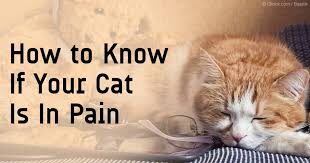 One of the most frustrating experiences in any pet parent’s life is when they think, or find out, their cat is in pain. Sometimes pain is suspected, due to an injury or recent surgery. Other times it’s a complete surprise, happening when the veterinarian notices a condition that is surely causing pain, but the pet parent remained completely unaware.
One of the most frustrating experiences in any pet parent’s life is when they think, or find out, their cat is in pain. Sometimes pain is suspected, due to an injury or recent surgery. Other times it’s a complete surprise, happening when the veterinarian notices a condition that is surely causing pain, but the pet parent remained completely unaware.
Cats, to their credit, can be quite stoic. This comes from thousands of years of natural selection, when it was in the cat’s best interest to hide any weakness from predators and potential mates alike. Bottom line, it can be extremely hard to know when a cat is in pain. However, that shouldn’t stop a responsible pet parent from learning the subtle signs, so they can help their pet sooner, rather than later.
Know what’s normal –
The first step is to be an involved pet parent and to learn what’s “normal” for your cat. What are their typical eating, eliminating and sleeping habits? Do they enjoy being around strangers? How active are they throughout the day? Having the answers to these questions will help you determine when something’s a bit “off” with your cat.
Know the signs -
If you do feel something isn’t quite right, check through this list of common signs of pain in cats:
- A faster, or more shallow, breathing pattern.
- Constricted pupils may indicate eye pain, while dilated pupils can mean there’s pain in other areas of the body. Cats may also keep their eyes closed, or squint, when in pain. In some cases they may simply avoid a brightly lit area altogether.
- A marked decrease in eating and/or drinking.
- Less overall grooming than usual. However, if they’re injured they may do excessive grooming in the immediate area.
- Hiding behavior, in a normally social kitty. It is extremely common for cats to hide when they’re in pain.
- A cat that growls or hisses when they’re stroked or moved.
- Decrease in overall activity, especially related to jumping and climbing stairs.
- Trouble going to the bathroom, especially straining.
- Sitting, walking or laying in unusual (for them) body positions. For instance, a lower head posture when walking, or the constant “flicking” of a tail can indicate pain.
- Much less interaction with other household pets.
If you do suspect your pet is in pain, take precautions to keep them, and the people around them, safe. When a cat is in pain it is much more likely to bite and scratch. In addition, if your cat shows some of these signs, but continues to purr regularly, the purring itself may be another sign of pain.
If more than a few of these indicators sound familiar, it’s always better to have your cat evaluated by your veterinarian. Remember, “when in doubt, check it out.” If you catch something early, and your kitty has a chance to make a full recovery, you’ll be so glad you did!



